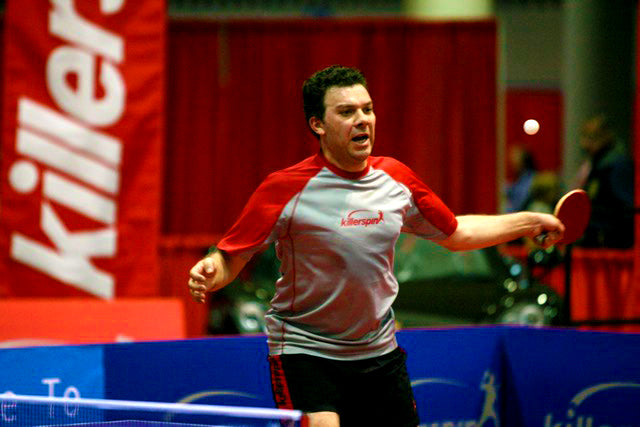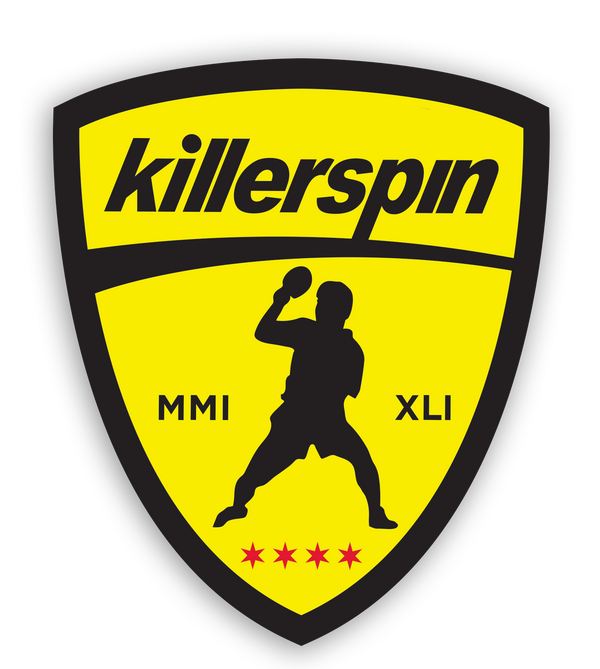
Four Table Tennis shots every player needs to master the game!
There are a few different shots everyone needs to master if you're hoping to become a table tennis star in your own right. Short of putting in the years of work to become world champion, for us mere mortals it’s usually enough to be crowned the champion of the office or family. Especially if you come from a highly competitive, sports oriented family. Heck, just beating your dad or even your boss is worth a little extra practice sometimes.
When it comes to Table Tennis in particular, everyone knows it takes a few months to become good at it, but a lifetime to master. So, we’ll focus on all the enthusiasts out there, hoping this lesson will earn them some bragging rights on the “field.”
There are four basic ping pong shots you absolutely need to know before you start making cunning plans to embarrass your boss in front of everyone (Disclaimer: I have not heard of, or witnessed any similar situations at Killerspin).
The four basic table tennis shots:
- Forehand Drive
- Backhand Drive
- Forehand Push
- Backhand Push
The Pillars of Table Tennis
Before you start working on these, it is crucial to have good equipment. It doesn’t have to be a $300 paddle designed by a pro, but it has to be assembled with a decent rubber that can generate spin, otherwise, there will be no point in doing the shots. A JET400 or better paddle is a great beginner's paddle with plenty of room for growth.
You’ll also want to make sure you’re holding the paddle correctly, that your stance is good, and last, but definitely not least, never underestimate the importance of footwork! Think of these three things as pillars of your game. Your game can only be as strong as its foundation.
How to Master The Forehand Drive (Counter)
Forehand Counter (Drive) is the basic stroke everyone starts with. The forehand drive should be used when your opponent gives you a deep/high ball. A forehand drive is the perfect way to stop your opponent from making an aggressive, attacking stroke. You should also try to have your ball land as close to your opponent’s baseline/sideline.
Before getting into the execution of the stroke, we should focus on the stance. Your body should be positioned close to the table, with your right leg further from the table than your left (vise versa is you’re a lefty). Most of your body weight should be put on the balls of your feet and your knees should be slightly bent. This will allow you faster movement.
Before hitting the ball, you’ll need to do a backswing that will allow you to accumulate enough power to make a strong, aggressive stroke. Rotate your body to the right and transfer the body weight onto your back foot. This is not full-scale tennis, so don't take a large, looping backswing. It should be short and straight back.
As soon as the ball hits your side of the table, it is time to go for it. Rotate your body in the opposite direction (left), and transfer the weight of your body to your front foot. Keep your paddle slightly closed (face of the paddle slightly facing the top of the table) and hit the ball at the peak of its bounce. Try accelerating the speed of the stroke once you hit the ball. That will help you gain some topspin. Once you’re done hitting the ball, continue the movement of your stroke and finish the forehand drive with your paddle pointing up, but not too far back.
How To Master The Backhand Drive (Counter)
This stroke should be played in the same situation as the Forehand Drive when the ball is hit to your backhand side. A backhand drive should be used when your opponent gives you a deep/high ball. The backhand drive is the perfect way to stop your opponent from making an attacking stroke. As with the forehand drive, you should try to have your ball land as close to your opponent’s baseline/sideline.
Start the Backhand Drive by facing the table. Your racket should move forward and slightly upwards, although slightly closed. Keep your wrist loose, it will help you impart spin onto the ball.
The ball should be hit at the peak of its bounce, and the stroke is finished with your arm pointing in the direction of the ball (elbow still bent).
How To Master The Forehand Push
This stroke is normally used for short balls, and its purpose is to stop your opponent from making an attacking shot.
Like the forehand drive, it’s important to get your feet into the right position. The body position is similar. Your right foot should be further back, and your feet should be two shoulder lengths apart.
Now, unlike forehand drive, when you’re doing the forehand push, your paddle should be open, around 45%, so your paddle can travel under the ball.
Start by doing a backswing, and once the ball hits the surface, move the body backwards. Now, keep in mind that this is a subtler stroke, and that you should only brush the ball (not hit it). Your elbow should remain open as you continue with the stroke, and you should finish with your bat in front of your body.
How To Master The Backhand Push
The stroke is normally used for short balls, and its purpose is to stop your opponent from making an attacking shot.
Start by standing close to the end line, facing the table.
Your paddle should be open, 45%, and the backswing should and with your hand close to your chest. Use a short stroke, and move your arm forward and down from the elbow. Make sure you “brush” the ball with a swift move while the ball is at its peak (or slightly earlier).
You should finish with the paddle in front of you and down towards the table. The arm should still be bent at the elbow.
So, that’s the whole deal. Well, not really, but it’s a good start. Remember, nothing that requires skill can ever be mastered without some good old fashioned trial and error. Practice these shots and you might even find yourself having some fun, you never now. It beats the hell out of sitting in front of a computer. #UnPlugNPlay
